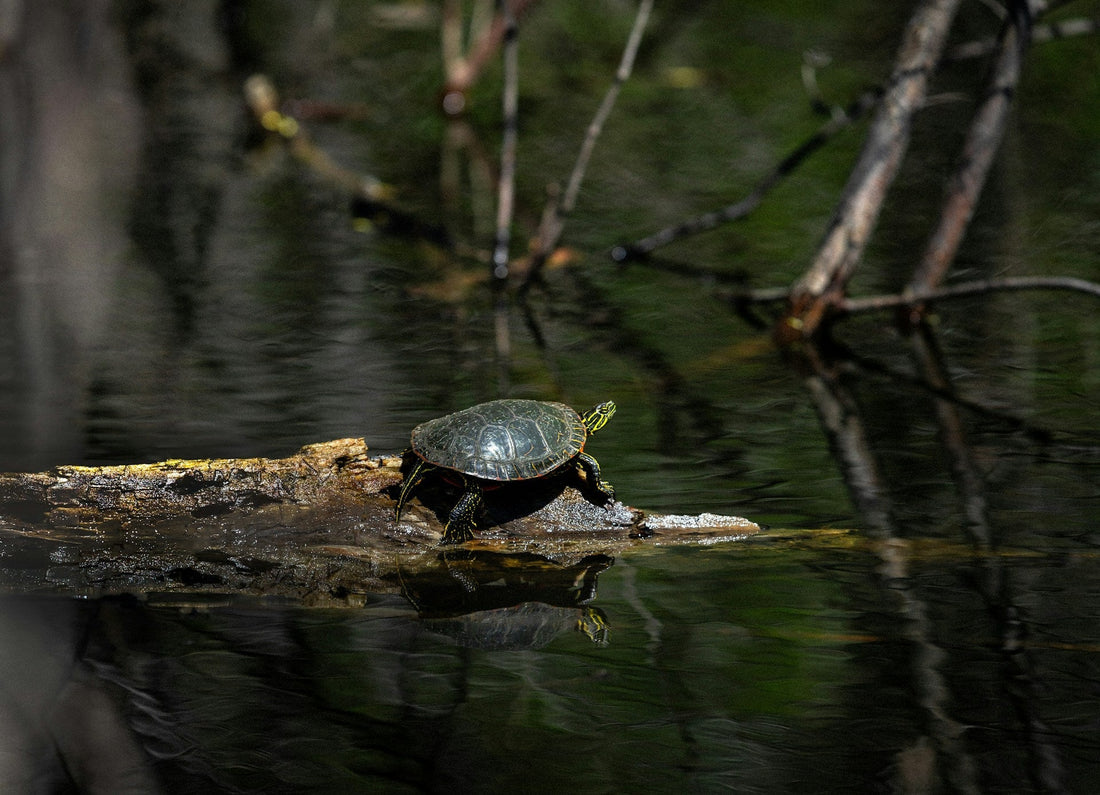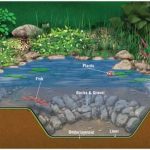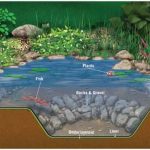To get rid of turtles in a pond, install turtle exclusion devices or fences to prevent their entry and remove any sources of food or shelter that may attract them. Turtles in a pond can be a nuisance and harm the ecosystem, so taking these measures will help maintain balance in the environment.
Introducing turtles to a pond can be a wonderful addition to its ecosystem as they contribute to the diversity of aquatic life. However, sometimes these creatures can become a problem if their population grows uncontrollably or if they cause damage to the vegetation or other inhabitants.
In such cases, it may be necessary to take steps to remove turtles from the pond. This article will explore various methods to effectively manage turtle populations in ponds, ensuring a healthy and thriving ecosystem. From installing turtle exclusion devices to disrupting their nesting sites, we’ll cover different strategies to help you get rid of turtles in a pond.
Understanding Pond Turtles
Understanding Pond Turtles is crucial for effectively managing your pond ecosystem. Pond turtles are fascinating creatures that play a significant role in the balance of aquatic life.
Identifying Different Species
Pond turtles come in various species, including painted turtles, red-eared sliders, and snapping turtles. Each species has distinct physical characteristics and behaviors that impact their interaction with the pond environment.
Behavior And Habits
Pond turtles are known for their basking behavior where they rest on logs or rocks to soak up the sun. They also exhibit nesting habits by digging holes in the soil near the water to lay their eggs. Understanding these behaviors can help in managing turtle populations in your pond.

Credit: pondmedics.com
Effects Of Pond Turtles
environmental Impact
Pond turtles can cause disruption in the ecosystem.
disruption In Ecosystem
- Turtles can overpopulate and disturb the natural balance.
- They feed on aquatic plants crucial for other pond inhabitants.
- Turtles can compete for resources with local fish species.
Implementing control measures is essential for preserving the pond ecosystem.
Prevention Methods
Efficient prevention methods can help keep turtles at bay and maintain the balance of your pond’s ecosystem.
Natural Habitat Modification
Modifying the natural habitat around your pond can discourage turtles from making it their home.
- Planting dense vegetation around the pond’s perimeter.
- Using rock barriers to make access to the pond difficult for turtles.
- Installing a fence around the pond area to prevent easy entry for turtles.
- Ensuring there are no sandy areas which turtles use for nesting.
Installation Of Deterrents
Strategic installation of deterrents can dissuade turtles from inhabiting your pond.
- Placing floating platforms in the water to create a barrier for turtles.
- Using decoy predators, such as plastic or rubber snakes, to scare away turtles.
- Deploying underwater fencing or netting to prevent turtles from swimming freely.
- Implementing motion-activated devices with water-spraying mechanisms to startle turtles.

Credit: www.pinterest.com
Physical Removal Techniques
Welcome back to our series on how to get rid of turtles in a pond! In this installment, we’re going to discuss the physical removal techniques that can help you effectively manage a turtle infestation in your pond. Physical removal is an active approach that involves physically capturing and removing turtles from your pond. Let’s explore two popular physical removal techniques: manual removal and the use of traps.
Manual Removal
Manual removal, as the name suggests, involves physically capturing turtles one by one and removing them from your pond. This technique is most effective when dealing with a small number of turtles or when targeting specific individuals. Here’s how you can go about it:
- Prepare a sturdy fishing net or a turtle-specific trap.
- Slowly approach the turtle, taking care not to scare or startle it.
- Gently place the fishing net or trap over the turtle.
- Lift the net or trap, ensuring the turtle is safely contained.
- Safely transfer the turtle to a holding container or relocate it to an appropriate area, away from your pond.
Please note that before attempting manual removal, it is crucial to research the local laws and regulations regarding the handling and relocation of turtles. Some species may be protected, and it is important to act within the legal boundaries.
Use Of Traps
The use of traps is an effective technique for capturing multiple turtles at once. This method is particularly useful when dealing with a larger number of turtles that are proving difficult to catch individually. Here’s how you can use traps to get rid of turtles in your pond:
- Choose a trap suitable for your pond’s size and the types of turtles present.
- Bait the trap with a turtle’s favorite food, such as fish or vegetables.
- Place the trap in a strategic location where turtles are frequently seen.
- Regularly check the trap and remove any captured turtles.
- Dispose of captured turtles as per local regulations, or relocate them to a designated turtle-friendly area.
Remember, patience is key when using traps, as it can take time for the turtles to become accustomed to the presence of the trap and take the bait.
By utilizing manual removal techniques and traps, you can effectively manage and reduce the turtle population in your pond. Stay tuned for our next installment where we will explore other methods to rid your pond of turtles!
Legal Considerations
When it comes to getting rid of turtles in a pond, it is essential to consider the legal aspects. This ensures that you are acting within the boundaries of the law and avoiding any potential fines or penalties. Understanding the regulations on turtle removal, as well as obtaining permits and permissions, is crucial for a turtle-free environment.
Regulations On Turtle Removal
Before taking any action to remove turtles from your pond, it is important to familiarize yourself with the regulations in your area. These regulations can vary depending on your location and the species of turtles involved. It is not only essential for the well-being of the turtles but also for protecting the ecosystem as a whole.
Some regions may have specific guidelines on the removal of certain endangered or protected turtle species. These guidelines are designed to maintain the balance of the local ecosystem and safeguard the turtle populations. By adhering to these regulations, you can ensure that your turtle removal efforts are lawful and responsible.
Permits And Permissions
In many cases, obtaining permits or permissions from the relevant authorities is necessary before removing turtles from a pond. These permits may require you to provide details about the pond, the species of turtles present, and your intended methods of removal. The purpose of these permits is to ensure that turtle removal is done in a controlled and humane manner.
To obtain the necessary permits or permissions, it is advisable to contact your local or state wildlife agency. They will be able to guide you through the process and provide you with the required documentation. It is important to note that removing turtles without the necessary permits may result in legal consequences, so it is crucial to follow the proper channels.
If you are unsure about the regulations or permits in your area, it is always best to consult with a wildlife expert or professional who has knowledge and experience in dealing with turtle removal. They will be able to provide you with accurate information and guidance, ensuring that you are compliant with the law.
By understanding the regulations on turtle removal and obtaining the necessary permits and permissions, you can remove turtles from your pond in a legal and responsible manner. This allows you to maintain the balance of your pond’s ecosystem while creating a turtle-free environment that meets your needs. Remember, it is essential to prioritize the well-being of the turtles and the environment throughout the process.
Alternative Solutions
When it comes to managing turtles in a pond, alternative solutions can be effective in controlling their population without causing harm. Instead of resorting to lethal methods, introducing natural predators and creating barriers are humane and eco-friendly ways to maintain a balanced ecosystem in your pond.
Introducing Predators
One effective alternative solution is to introduce natural predators to the pond ecosystem. Predatory fish such as largemouth bass and northern pike can help control the turtle population by preying on their young and eggs. These fish can be introduced to the pond, where they will actively seek out turtle eggs and reduce the overall turtle population.
Creating Barriers
Another approach to controlling turtles in a pond is to create physical barriers that prevent them from accessing certain areas. Installing fences or mesh barriers around the pond perimeter can deter turtles from laying eggs in the surrounding soil. Additionally, floating row covers or nets can be used to cover specific areas of the water, limiting turtles’ access to suitable nesting sites.
Impact On Other Wildlife
Minimizing Collateral Damage
Removing turtles from a pond should be done carefully to protect other wildlife.
- Collateral impact can include disturbance to plants and fish habitats.
- Trap-and-release methods should be used to minimize harm to surrounding species.
Supporting Native Species
Preserving the ecosystem balance by prioritizing native species is essential.
- Encourage the growth of native plants to support natural habitats.
- Keeping water clean and debris-free helps sustain the local ecosystem.
Long-term Management
Looking for effective long-term management tips to remove turtles from your pond? Discover strategies to safely and efficiently eliminate turtles from your property.
Long-Term Management Managing turtles in a pond involves long-term strategies for effective control. This includes Regular Monitoring and Community Involvement.Regular Monitoring
Regularly check the pond for turtle activity to identify patterns and behaviors. Keep an eye on nesting sites and breeding seasons.Community Involvement
Engage with the community to raise awareness about responsible pet ownership and habitat conservation. Collaborate on sustainable solution initiatives.
Credit: www.livingwateraeration.com
Conclusion
Effectively removing turtles from a pond requires a strategic and humane approach. By combining physical barriers, deterrents, and natural predator introduction, you can effectively manage the turtle population. It’s essential to consider the ecological balance and local regulations when implementing control measures.
Remember to approach turtle management ethically and responsibly for long-term success.





